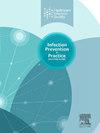多管齐下的系统强化方法改善坦桑尼亚感染预防和控制做法
IF 1.9
Q3 INFECTIOUS DISEASES
引用次数: 0
摘要
为确保其感染预防和控制规划的有效性,坦桑尼亚认识到有必要修订感染预防和控制指南和标准;升级IPC培训材料,以解决职前卫生保健学生和卫生工作者之间的知识差距;改进国家和卫生机构一级的IPC治理和做法;改进对IPC项目绩效的监测和对医疗保健相关感染(HAIs)的监测。总体而言,我们的工作涉及2018年至2024年期间世界卫生组织《国际卫生条例基准》能力工具中与ipcc相关的21项行动中的20项。在一年的时间里,我们发现在10家干预医院中,发生手术部位感染的患者比例平均保持在1%,低于全球2.5%左右的平均水平。卫生部随后扩大了对另外69家医院的HAI监测。因此,在2023年8月进行的联合外部评估中,坦桑尼亚在HAI监测方面获得了3分(能力发达)。在这一进展的基础上,卫生部将继续在所有公共和私营卫生设施中扩大IPC规划。鉴于与埃博拉、马尔堡、Mpox和其他病原体相关的卫生安全风险,需要作出重大努力,教育公众了解实施IPC措施以保护自己免受传染病侵害的重要性。本文章由计算机程序翻译,如有差异,请以英文原文为准。
Multi-pronged system strengthening approach to improving infection prevention and control practices in Tanzania
To ensure the effectiveness of its infection prevention and control (IPC) programs, Tanzania recognised a need to revise IPC guidelines and standards; upgrade IPC training materials to address knowledge gaps among preservice health care students and health workers; improve IPC governance and practice at the national and health facility levels; and improve monitoring of IPC program performance and surveillance of healthcare associated infections (HAIs). Overall, our work addressed 20 out of 21 IPC-related actions in the World Health Organisation Benchmarks for International Health Regulations capacities tool between 2018 and 2024. Over a one-year period, we found that the percentage of patients developing surgical site infections remained at 1% on average in the 10 intervention hospitals, which is lower than the global average of around 2.5%. The Ministry of Health subsequently scaled up HAI surveillance to 69 additional hospitals. As a result, Tanzania achieved a score of 3 (developed capacity) for HAI surveillance specifically in the Joint External Evaluation conducted in August 2023. Building on this progress, the Ministry of Health will continue to scale up IPC programs in all public and private health facilities. Given the health security risks associated with Ebola, Marburg, Mpox, and other pathogens, significant efforts are needed to educate the public on the importance of practicing IPC measures to protect themselves from infectious diseases.
求助全文
通过发布文献求助,成功后即可免费获取论文全文。
去求助
来源期刊

Infection Prevention in Practice
Medicine-Public Health, Environmental and Occupational Health
CiteScore
4.80
自引率
0.00%
发文量
58
审稿时长
61 days
 求助内容:
求助内容: 应助结果提醒方式:
应助结果提醒方式:


